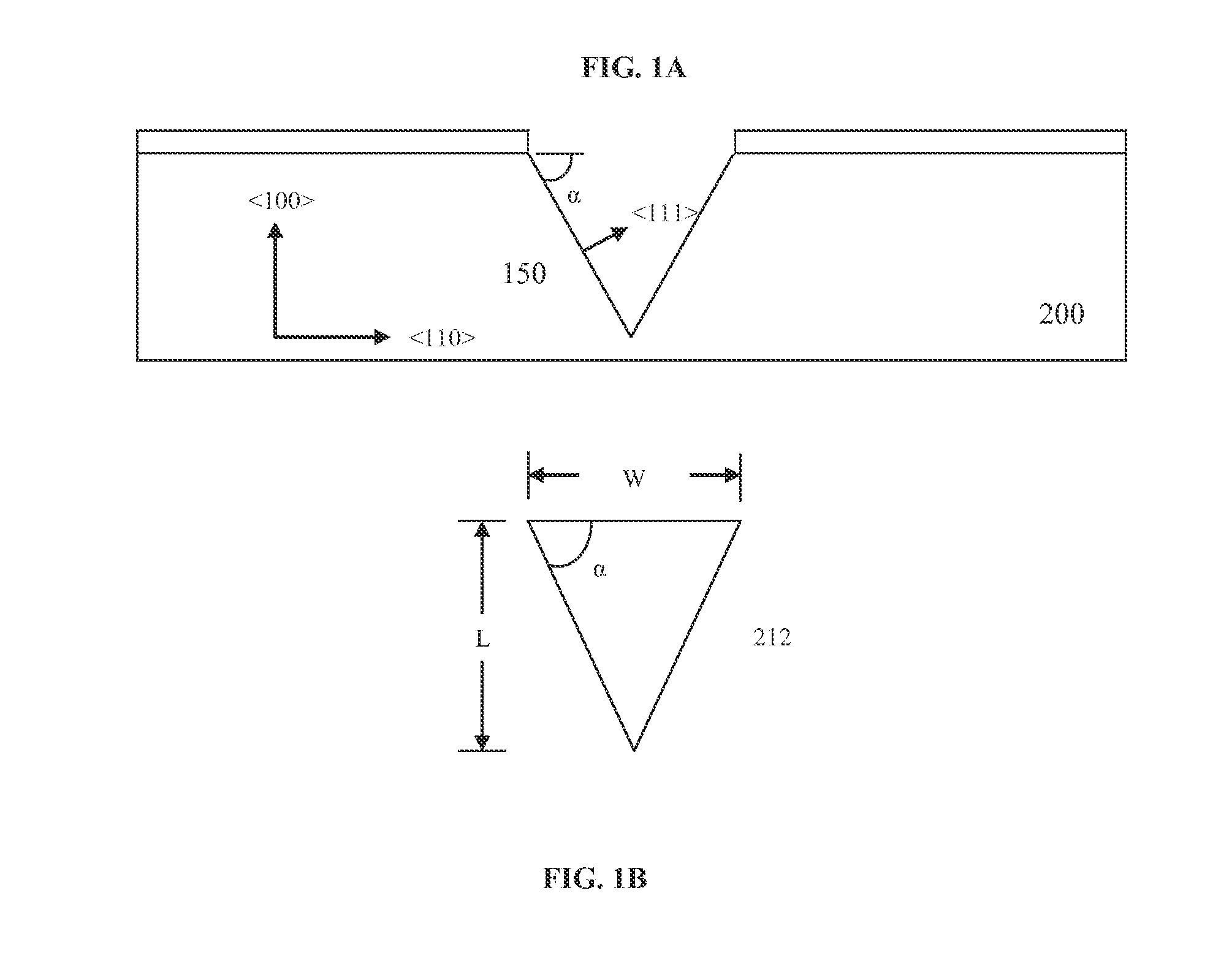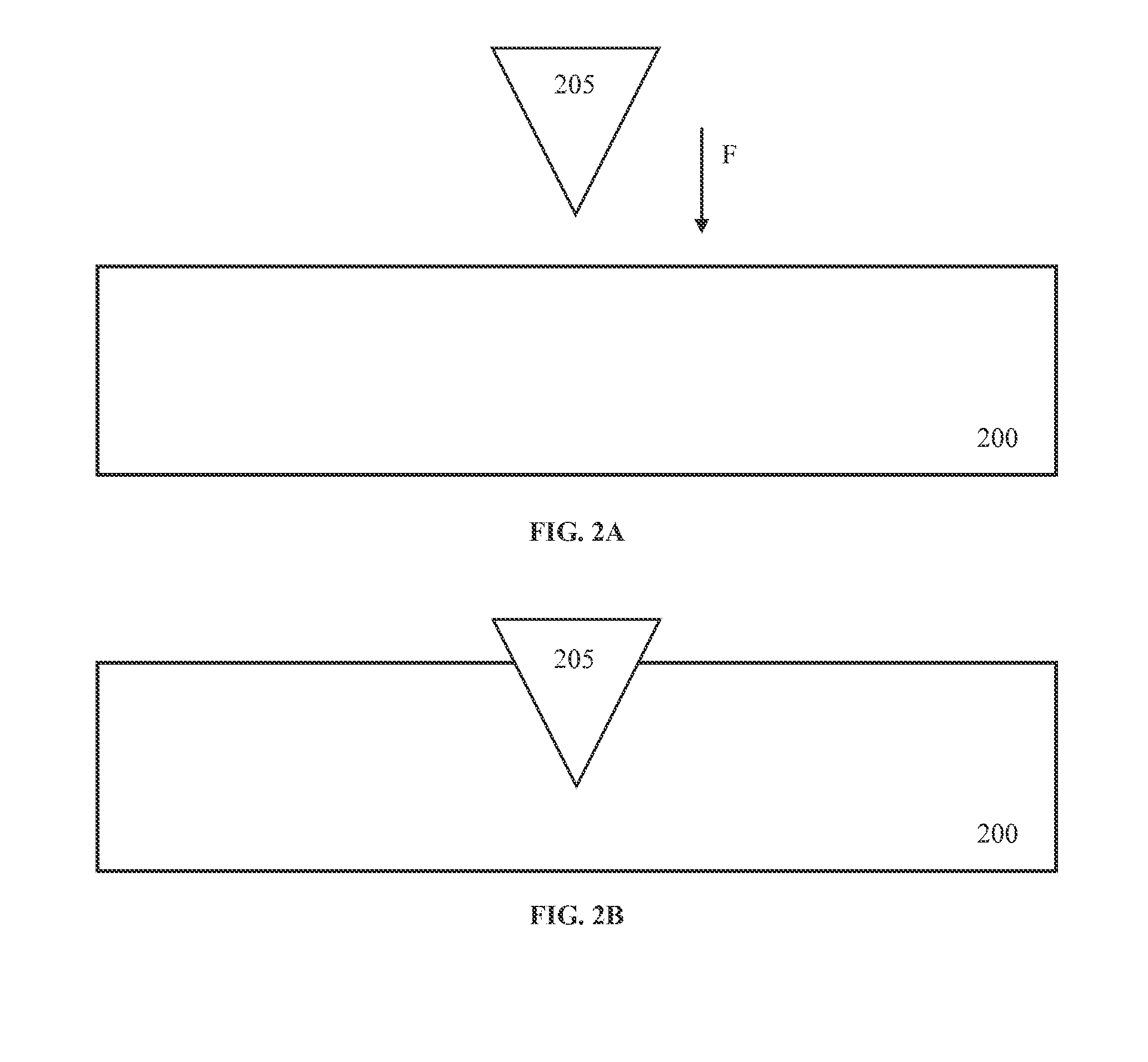Indented Mold Structures For Diamond Deposited Probes
a technology of diamond deposited probes and molds, applied in the field of nanostructures, can solve the problems of reducing the young's modulus, weakening the material, time-consuming and often cost prohibitive modification process
- Summary
- Abstract
- Description
- Claims
- Application Information
AI Technical Summary
Benefits of technology
Problems solved by technology
Method used
Image
Examples
Embodiment Construction
[0042]The present invention discloses a novel method of fabricating a SPM probe. The SPM probe 250 includes a planar body 230, a cantilever 225 extending from an edge of the body 230, and a tip 212 depending from an end of the cantilever 225, having a length and a width.
[0043]The method of fabricating the SPM probe 250 comprises the steps of: (a) positioning a pattern probe 205 over a mold substrate material 200; (b) indenting the pattern probe 205 into the mold substrate material 200 such that a mold pit 210 is formed in the shape of the pattern probe 205; (c) depositing a film 215 onto the mold substrate material 200 such that the mold pit 210 is filled with the deposited film 215; (d) removing a portion of the deposited 215 film to form the probe 250; and (e) releasing the probe 250 from the mold substrate material 200.
[0044]The mold substrate material 200 can vary greatly depending on the pattern probe 205 being used to create the shape of the mold pit 210. Very soft materials l...
PUM
 Login to View More
Login to View More Abstract
Description
Claims
Application Information
 Login to View More
Login to View More - R&D
- Intellectual Property
- Life Sciences
- Materials
- Tech Scout
- Unparalleled Data Quality
- Higher Quality Content
- 60% Fewer Hallucinations
Browse by: Latest US Patents, China's latest patents, Technical Efficacy Thesaurus, Application Domain, Technology Topic, Popular Technical Reports.
© 2025 PatSnap. All rights reserved.Legal|Privacy policy|Modern Slavery Act Transparency Statement|Sitemap|About US| Contact US: help@patsnap.com



